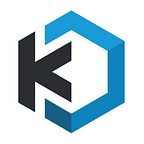Containerized Desktop Infrastructure (CDI): Improved Efficiency, Scalability, and Security
In recent years, there has been a shift towards containerization in the technology industry as a way to more efficiently and effectively deploy applications and desktop operating systems. Containerization involves packaging an application and its dependencies into a single container, allowing it to run consistently across different environments. This approach has many benefits over traditional virtual machines, including increased efficiency, scalability, and portability.
One of the key benefits of containerization is the ability to avoid over-provisioning of resources. Virtual desktop infrastructure (VDI) has long been a popular solution for organizations looking to provide remote access to desktop operating systems. However, many organizations over-provision VDI, leading to wasted resources and costs. This is often due to the on-demand nature of VDI, where organizations purchase more licenses than they need with the hope that they will eventually be used.
Containerization, on the other hand, allows for more efficient resource allocation. Containers can be easily scaled up or down as needed, and resources can be shared across multiple containers, reducing the need for over-provisioning. Additionally, container orchestration tools, such as Kasm Workspaces, allow for the automatic scaling of containers based on the demand for resources.
Read about our partnership with Docker to establish the next-generation of Desktop as a Service (DaaS) offerings: https://www.docker.com/blog/docker-technology-enables-the-next-generation-of-desktop-as-a-service-daas/
Another benefit of containerization is increased security. While VDI has long been touted as a safer solution than laptops, the fact is that VDI has numerous points of ingress and egress to AD, SQL databases, etc that make it possible for threats to move laterally across the infrastructure. Containerization, on the other hand, allows for more granular control over the environment, reducing the attack surface and making it easier to isolate and contain threats. Additionally, containerization allows for the use of micro-segmentation, which further reduces the attack surface by segmenting the network into smaller, isolated segments.
Check out NetworkChuck Deploying a Kasm CDI Deployment for the Home Lab) Training/Sandboxes, and Container Streaming:
In addition to the benefits of containerization for application deployment, it can also be used to deploy desktop operating systems in a more efficient and secure manner like Kali or Ubuntu, Redhat, and Oracle. By packaging the desktop operating system and its dependencies into a container, organizations can provide remote access to a consistent and secure environment for their users. Additionally, by using container orchestration tools, such as Kasm Workspaces, organizations can easily scale the number of desktop operating systems based on the demand for resources. KASM Workspaces now supports Microsoft Windows Desktop Support in Kasm Workspaces v1.12 allows for the creation of digital workspaces (pooled or Autoscaled) for Desktop as a Service (DaaS) on Any Cloud, Virtualized Desktop Infrastructure (VDI) cloud or VM providers.
The Kasm Workspaces v1.12 release, which now includes Microsoft Windows Desktop Support. This new capability provides our customers with additional flexibility for creating digital workspaces for a wide range of use cases such as Desktop as a Service (DaaS), Virtualized Desktop Infrastructure (VDI), Remote Browser Isolation (RBI), Open-Source Intelligence Collection (OSINT), and Containerized Application Streaming (CAS). Check out this video for how to add Windows from OCI, AVD, or Any Cloud):
Kasm Workspaces enables users to create, handle and render servers over the Remote Desktop Protocol (RDP) or KasmVNC protocols, including support for Microsoft Windows directly to a Browser. This functionality allows for the pooling of servers, and the use of an optional companion Windows service that provides the ability to upload/download files to the desktop. This makes it possible to provide access to all assets in the enterprise, consolidating to a single web-native, DevOps-enabled, and highly resource-efficient remote workspace platform.
We at Kasm Technologies believe that the v1.12 software release is a game-changer for our customers and we are confident that it will help them to modernize the way they provide digital workspaces using open-source container streaming technology for web-native remote work solutions to their browsers. Our developer API can be dynamically orchestrated to support any type of desktop or application, and it fits every type of deployment model, including cloud (VPC or Public), on-premise (Air-Gapped), or even a hybrid environment.
The software release can be downloaded from Kasm’s website and is complimented by the Kasm Workspaces open-source images that are available on DockerHub.
